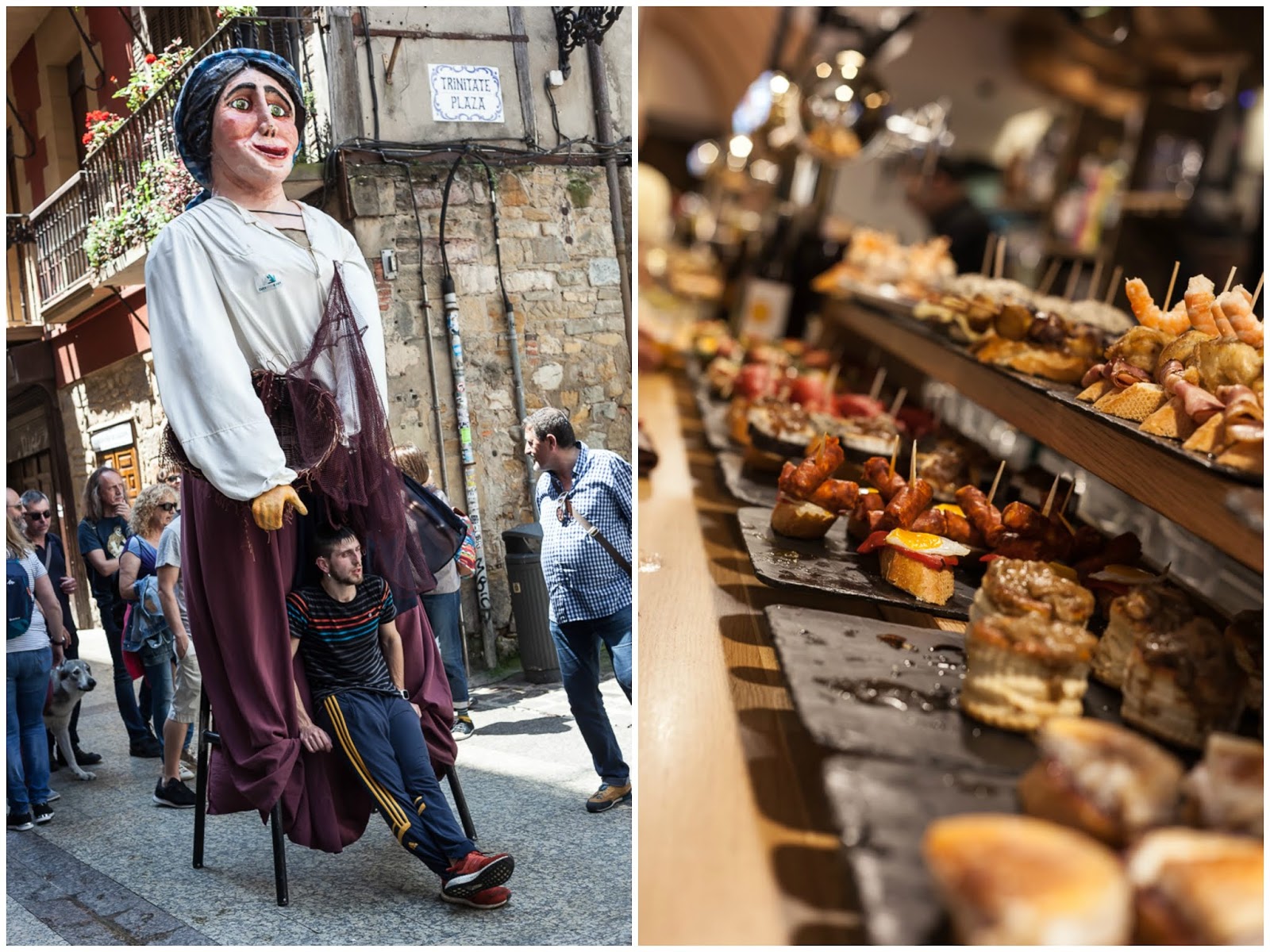Here are some more pics of my trip to Basque Country. This time the snapshots are from San Sebastian. On my previous post I've told something about the famous 'pintxos' that I had in this wonderful city.
San Sebastian is one of those rare cities with a sandy beach just in a walking distance from the city centre. The old town is full of pintxo bars, gourmet restaurants & gorgeous boutiques, and as I mentioned only a few steps and the atmosphere is totally different - chic seaside resort vibes.
San Sebastian certainly has that old time charm with a modern twist.
5 facts about San Sebastian
1. In Basque language San Sebastian is called Donostia.
2. San Sebastian International Film Festival was founded in 1952. this year it takes place right now September 21-29.
3. The population of San Sebastian is 186.000 inhabitants.
4. San Sebastian has the most Michelin stars per capita in the world after Kyoto in Japan.
5. San Sebastian Day is on January 20. Then for 24 hours, the entire city is full of the sound of drums. The adults are dressed as cooks and they march all night with their cook hats and white aprons.
~~~~
Tässä muutama kuva Baskimaan todella viehättävästä San Sebastianista. Kerroin jo aikaisemmin kaupungin herkullisesta pintxo-tarjonnasta (wink wink.)
San Sebastian on yksi niistä harvoista kaupungeista, joissa hiekkaranta on vain muutaman askeleen päässä kaupungin keskustasta. Vanhakaupunki on täynnä pintxo-baareja, gourmet-ravintoloita ja loistokkaita putiikkeja ja heti nurkan takana avautuu aivan toisenlainen tunnelma - hienostunut merenrantafiilis.
San Sebastianissa yhdistyy vanhan ajan charmi ja tämän päivän elämäntyyli.
5 faktaa San Sebastianista
1. Baskin kielessä San Sebastian on nimeltään Donostia.
2. San Sebastianin kansainväliset elokuvafestarit perustettiin vuonna 1952. Tänä vuonna ne ovat juuri nyt käynnissä 21.-29.9.
3. San Sebastianissa on 186.000 asukasta.
4. San Sebastianissa on eniten Michelin tähtiä per maailmassa heti Kioton jälkeen.
5. San Sebastianin päivä on 20.1. Silloin seuraavat 24 tuntia koko kaupunki täyttyy rummutuksesta. Aikuiset ovat pukeutuneet kokeiksi ja marssivat kokkihatut ja valkoiset essut päällä.















































